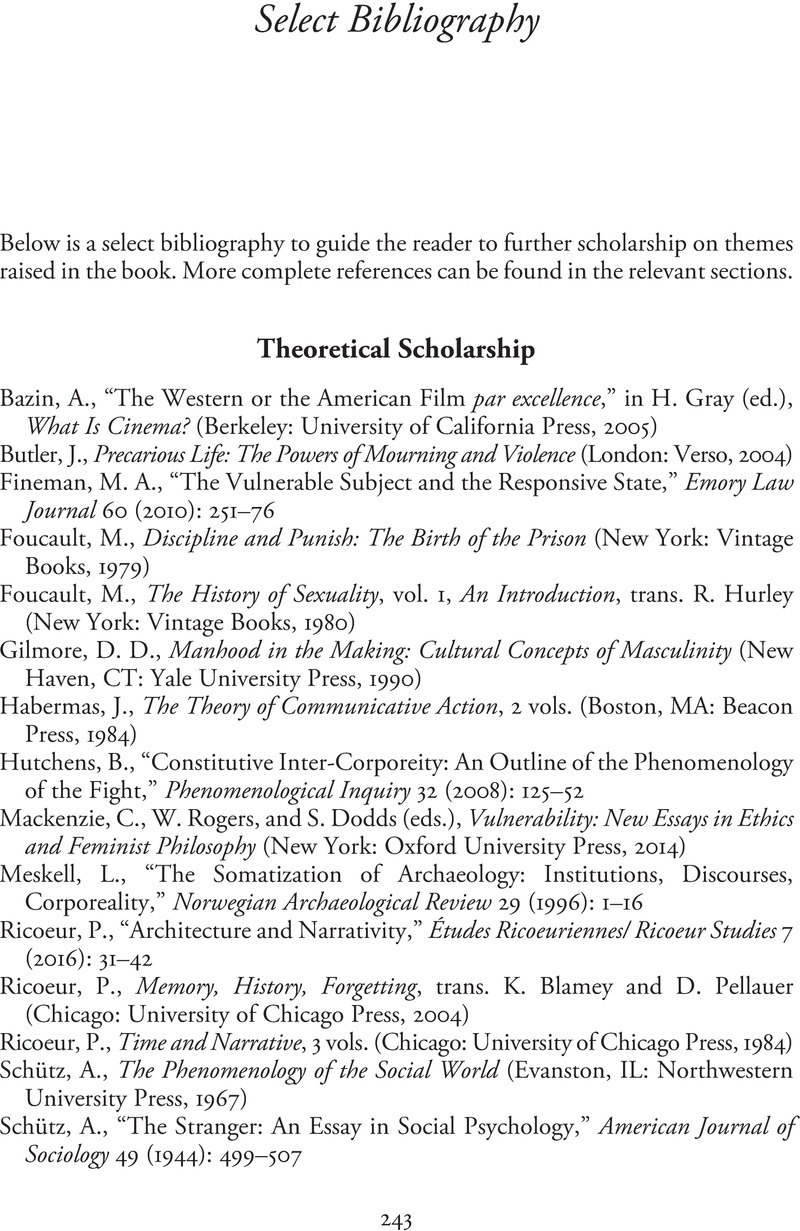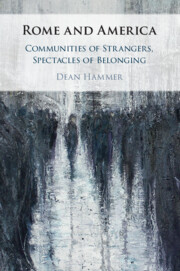Book contents
- Rome and America
- Rome and America
- Copyright page
- Dedication
- Contents
- Figures
- Preface
- Introduction
- Chapter 1 Memory, Identity, and Violence
- Chapter 2 Imagining Purity
- Chapter 3 The Wild Stranger and the Conquest of Space
- Chapter 4 Playing Culture
- Chapter 5 The Experience of Politics and the Crises of Two Republics
- Select Bibliography
- Index
- References
Select Bibliography
Published online by Cambridge University Press: 22 December 2022
- Rome and America
- Rome and America
- Copyright page
- Dedication
- Contents
- Figures
- Preface
- Introduction
- Chapter 1 Memory, Identity, and Violence
- Chapter 2 Imagining Purity
- Chapter 3 The Wild Stranger and the Conquest of Space
- Chapter 4 Playing Culture
- Chapter 5 The Experience of Politics and the Crises of Two Republics
- Select Bibliography
- Index
- References
Summary

- Type
- Chapter
- Information
- Rome and AmericaCommunities of Strangers, Spectacles of Belonging, pp. 243 - 248Publisher: Cambridge University PressPrint publication year: 2023

